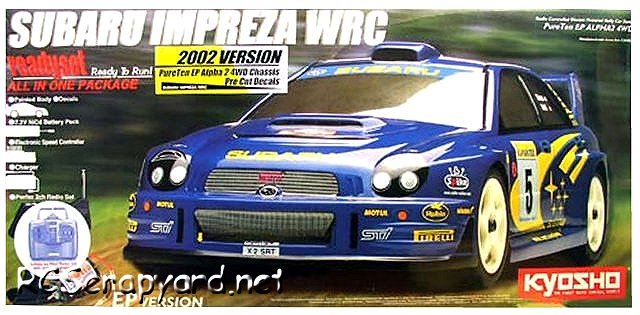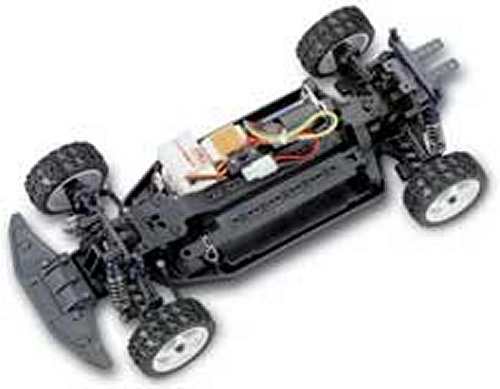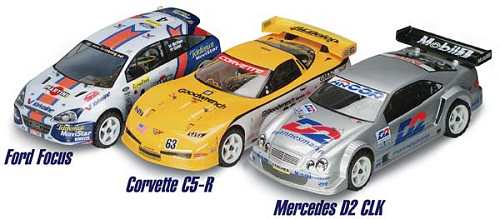

|
|
|


|
|
1/10 Scale Electric Rally/Touring Car:
Kyosho PureTen EP Alpha 2
|
Released by Kyosho in 2002, the 4WD PureTen Alpha 2 EP ReadySet series of RC models is available with a number of bodyshell options, including - # 30111 Mercedes D2 CLK - # 30112 Corvette C5-R - # 30116 Ford Focus - # 30117 Subaru Impreza WRC.
The model is belt driven, with a molded plastic bathtub chassis, gear differentials, coil spring over friction dampers, dogbone drive-shafts, ring type bearings and a 540 motor.

To race the Kyosho PureTen EP Alpha 2, it requires a high level of tuning for improved stability when cornering, to keep it on the track and give you more grip under acceleration. Even the smallest change in your cars settings can make a Big difference. Our simple to follow instruction chart will show how to attain the best Set-up for your personal requirements.








|
|
|

★ Kyosho PureTen EP Alpha 2 Chassis ★

★ Kyosho PureTen Alpha 2 ★

|
Buying a Used Kyosho PureTen EP Alpha 2
|
|
Manufacturers and Brands Catalogued, Listed and Reviewed by RC-Scrapyard.
At present, the RC Model Manufacturers, Brands and Distributors covered by us are: ABC Hobby, Academy, Acme Racing, Agama Racing, Amewi, Ansmann Racing, ARRMA, Team Associated, Atomic RC, Axial, AYK, Bolink, BSD Racing, Capricorn, Carisma, Carson, Caster Racing, Cen, Corally, Custom Works, Durango, Duratrax, ECX - Electrix, Exceed RC, FG Modellsport, FS-Racing, FTX, Fujimi, Gmade, GS-Racing, Harm, HBX, Helion, Heng Long, Himoto Racing, Hirobo, Hitari, Hobao, Hong-Nor, Hot Bodies, HPI, HSP, Intech, Integy, Jamara, JQ Products, Kawada, Kyosho, Losi, LRP, Maisto, Mardave, Marui, Maverick, MCD Racing, Megatech, Mugen, New Bright, Nichimo, Nikko, Nkok, Ofna, Pro-Pulse, Protech, PTI, RC4WD, Redcat Racing, RJ-Speed, Robitronic, Schumacher, Seben, Serpent, Smartech, Sportwerks, Step-Up, Tamiya, Team-C Racing, Team Magic, Thunder Tiger, Tomy, Top Racing, Traxxas, Trinity, Tyco, Vaterra RC, Venom, VRX Racing, WLToys, X-Factory, Xmods, Xpress, Xray, XTM, Yankee RC, Yokomo, ZD Racing and Zipzaps. |
|
Hints, Tips and Information
Wheel Caster Explained
Caster is basically the angle the steering kingpins or steering pivot points, leans back in relation to the horizontal when viewed from the side of the chassis. |
|
Hints, Tips and Information Rechargeable Batteries
|
|
RC Models:
|
Radio & Motors: |
Other
Accessories: |